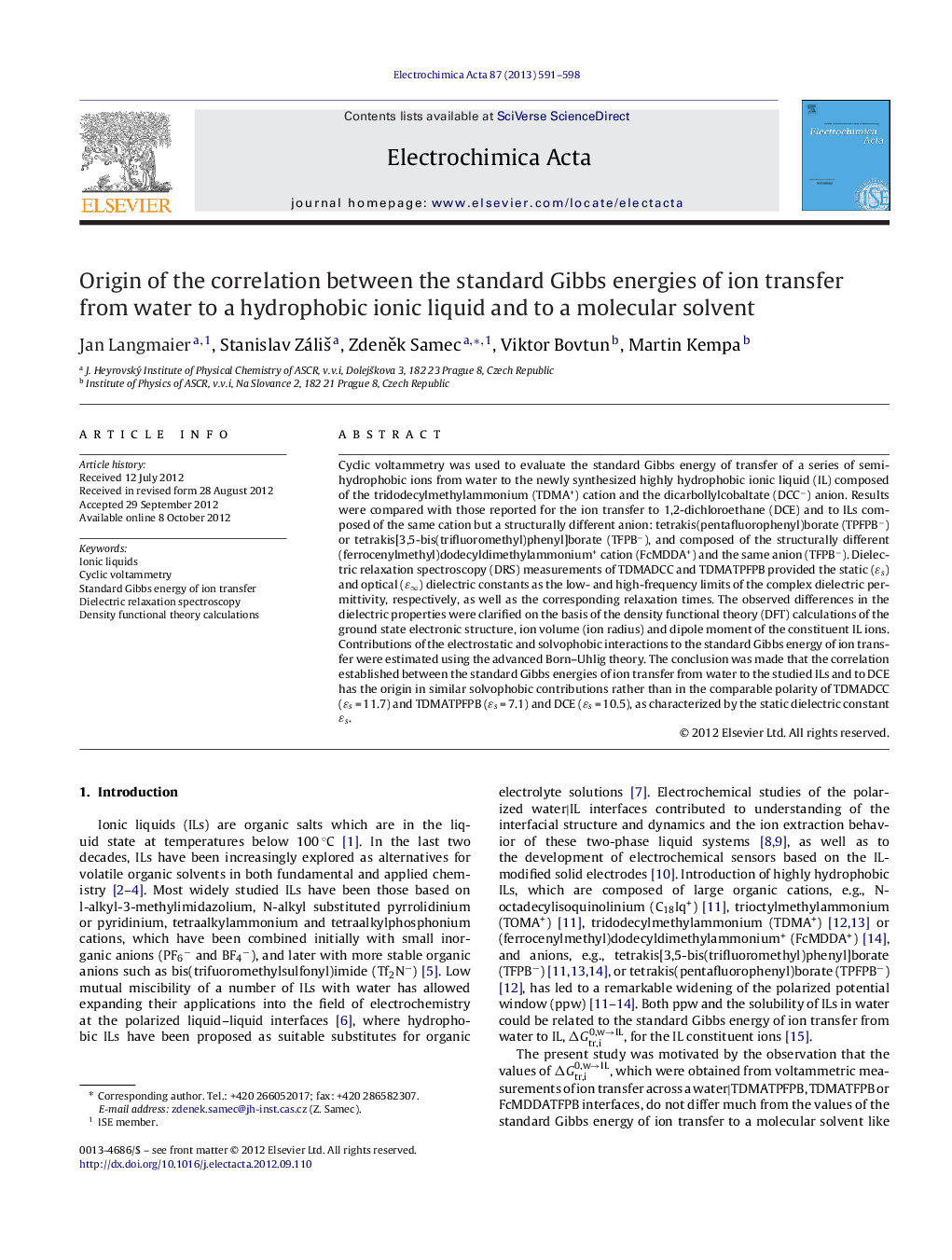| کد مقاله | کد نشریه | سال انتشار | مقاله انگلیسی | نسخه تمام متن |
|---|---|---|---|---|
| 188028 | 459651 | 2013 | 8 صفحه PDF | دانلود رایگان |

Cyclic voltammetry was used to evaluate the standard Gibbs energy of transfer of a series of semi-hydrophobic ions from water to the newly synthesized highly hydrophobic ionic liquid (IL) composed of the tridodecylmethylammonium (TDMA+) cation and the dicarbollylcobaltate (DCC−) anion. Results were compared with those reported for the ion transfer to 1,2-dichloroethane (DCE) and to ILs composed of the same cation but a structurally different anion: tetrakis(pentafluorophenyl)borate (TPFPB−) or tetrakis[3,5-bis(trifluoromethyl)phenyl]borate (TFPB−), and composed of the structurally different (ferrocenylmethyl)dodecyldimethylammonium+ cation (FcMDDA+) and the same anion (TFPB−). Dielectric relaxation spectroscopy (DRS) measurements of TDMADCC and TDMATPFPB provided the static (ɛs) and optical (ε∞ε∞) dielectric constants as the low- and high-frequency limits of the complex dielectric permittivity, respectively, as well as the corresponding relaxation times. The observed differences in the dielectric properties were clarified on the basis of the density functional theory (DFT) calculations of the ground state electronic structure, ion volume (ion radius) and dipole moment of the constituent IL ions. Contributions of the electrostatic and solvophobic interactions to the standard Gibbs energy of ion transfer were estimated using the advanced Born–Uhlig theory. The conclusion was made that the correlation established between the standard Gibbs energies of ion transfer from water to the studied ILs and to DCE has the origin in similar solvophobic contributions rather than in the comparable polarity of TDMADCC (ɛs = 11.7) and TDMATPFPB (ɛs = 7.1) and DCE (ɛs = 10.5), as characterized by the static dielectric constant ɛs.
Figure optionsDownload as PowerPoint slide
Journal: Electrochimica Acta - Volume 87, 1 January 2013, Pages 591–598